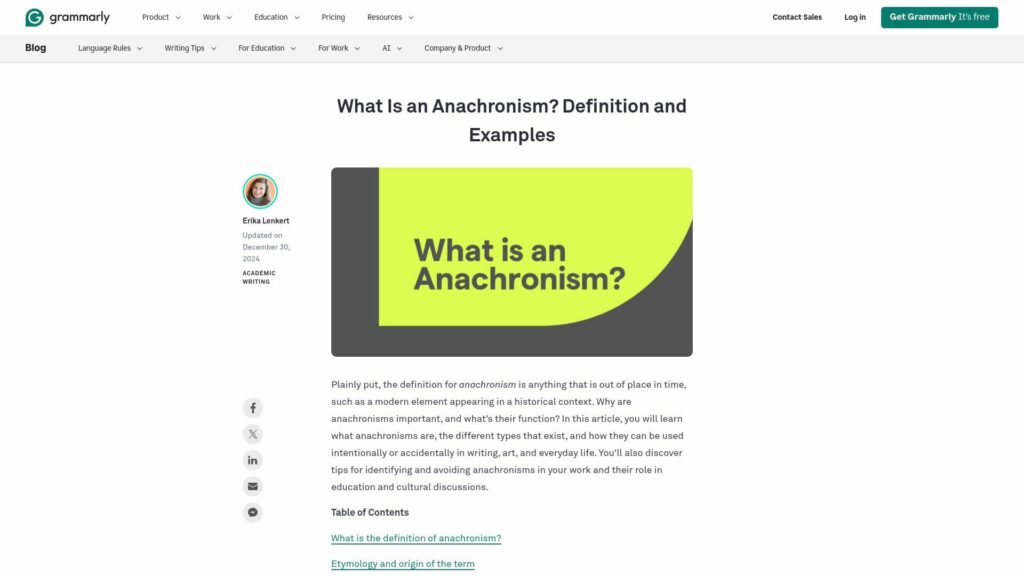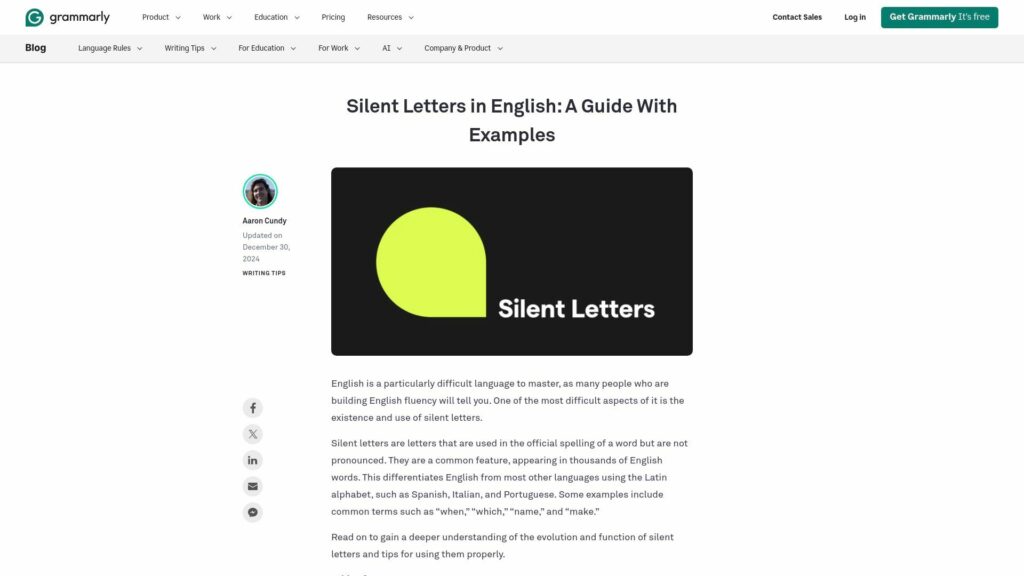What Is an Anachronism? Definition and Examples
TLDR: Anachronism refers to elements that are out of place in time, like modern items in historical settings. It serves various functions in writing, art, and education, and can be intentional (for humor or commentary) or accidental (due to oversight). The four types are parachronisms (past in present), prochronisms (future in past), behavioral (actions inconsistent with time), and false anachronisms (seemingly out-of-place but accurate). Understanding and identifying anachronisms enhance critical thinking and creativity in storytelling, while avoiding them requires thorough research.
https://www.grammarly.com/blog/academic-writing/anachronism/










